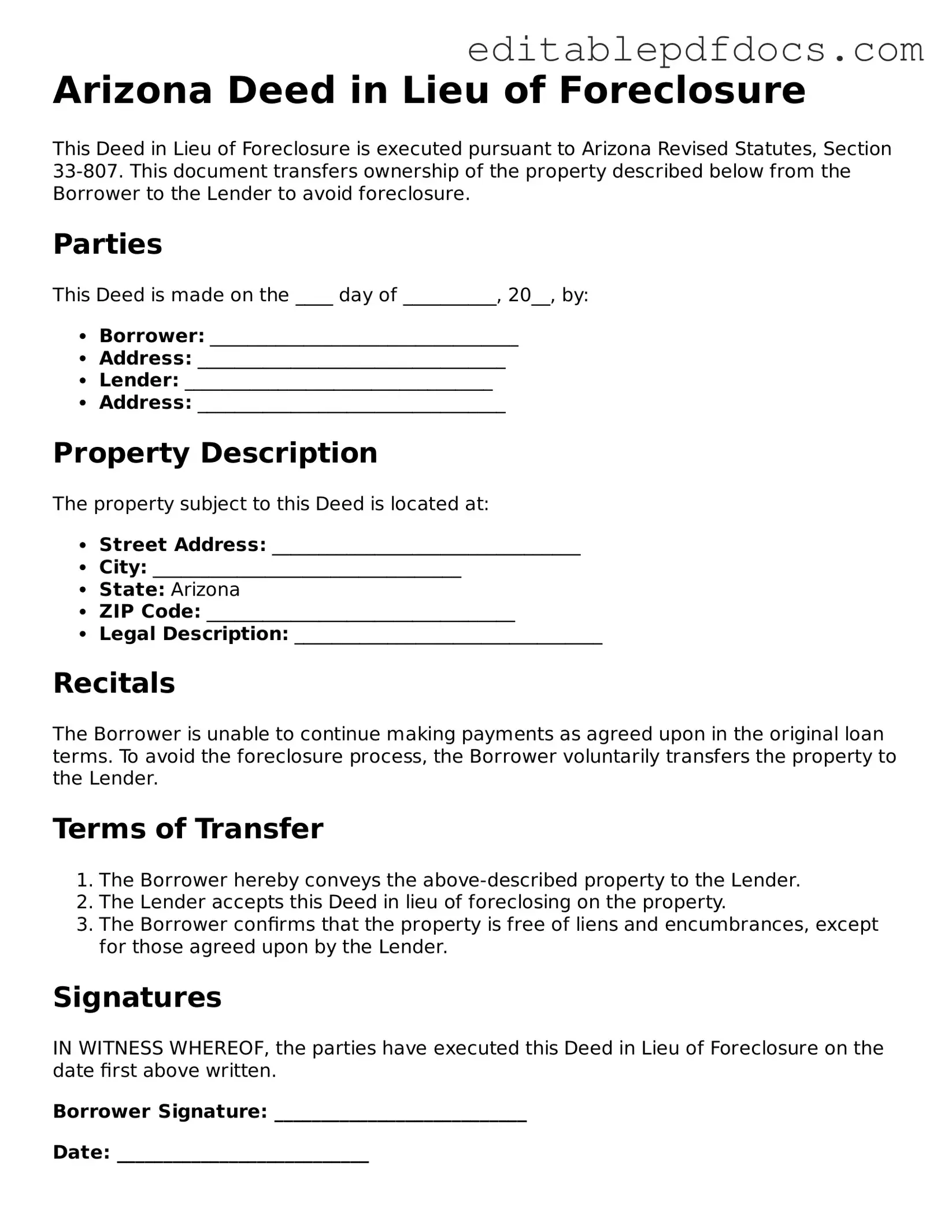Filling out the Arizona Deed in Lieu of Foreclosure form can be a straightforward process, but there are common mistakes that individuals often make. One prevalent error is not providing accurate property information. Ensuring that the property address and legal description are correct is essential. Inaccuracies can lead to delays or complications in the transfer process.
Another mistake involves failing to sign the document properly. All required parties must sign the form for it to be valid. Omitting a signature can invalidate the deed, making it ineffective in transferring ownership. Additionally, not having the signatures notarized can also pose problems. Notarization is often a required step in making the document legally binding.
People frequently overlook the importance of understanding the implications of the deed. A Deed in Lieu of Foreclosure can have significant consequences, such as affecting credit scores and future homeownership opportunities. Therefore, it is crucial to consult with a financial advisor or attorney before proceeding.
Another common oversight is neglecting to include any necessary attachments. Sometimes, additional documentation is required to support the deed. This may include a statement of the mortgage balance or other relevant financial information. Failing to include these documents can delay the process.
Some individuals also make the mistake of not checking for liens or other encumbrances on the property. Before signing the deed, it is vital to ensure that there are no outstanding debts associated with the property. If there are existing liens, the lender may not accept the deed.
Moreover, people sometimes rush through the form without reading all instructions carefully. Each section of the form must be completed as directed. Misinterpretation of the instructions can lead to incomplete or incorrect submissions.
Another frequent error is not notifying the lender of the intent to execute a Deed in Lieu of Foreclosure. Communication with the lender is essential throughout this process. Failing to do so may lead to misunderstandings or even legal complications.
Additionally, individuals may underestimate the timeline involved in processing the deed. It is important to allow sufficient time for the lender to review and accept the deed. Rushing this process can lead to further complications.
Finally, some people forget to keep copies of all documents submitted. Retaining copies of the signed deed and any related correspondence is crucial for future reference. This can help protect your interests should any issues arise after the transfer.
